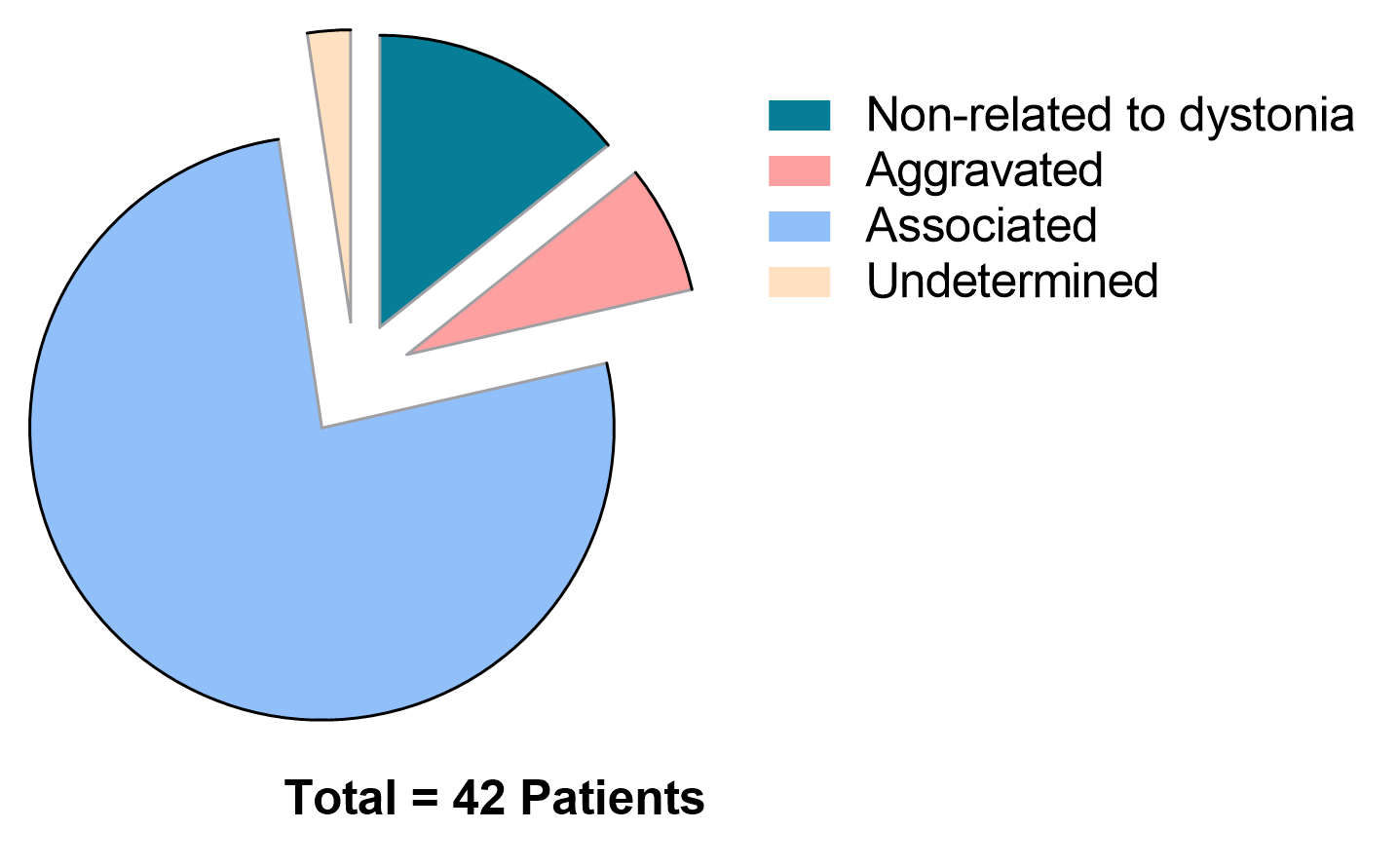Objective: To classify and better understand pain in Dystonia.
Background: Pain is an incapacitating non-motor symptom in dystonia. Evidence indicates that pain’s descending modulatory systems are impaired in dystonia. Unfortunately, information on this topic is still lacking. As a result, we do not have a straightforward way to classify or assess pain’s improvement after pharmacological, surgical, or non-invasive treatments.Pain is an incapacitating non-motor symptom in dystonia. Evidence indicates that pain’s descending modulatory systems are impaired in dystonia. Unfortunately, information on this topic is still lacking. As a result, we do not have a straightforward way to classify or assess pain’s improvement after pharmacological, surgical, or non-invasive treatments.
Method: We evaluated 73 patients in a multicentric study (with 5 different centers in Brazil) with hereditary/idiopathic dystonia of any distribution. These results are preliminary finds of this multicentric assessment. We applied the Burke-Fahn-Marsden (BFM) dystonia scale, two pain scales (the Douleur Neuropathique, DN4, and the short-form Brief Pain Inventory, BPI), and our developed classification system.
Results: Patients (53.0 ± 15.7 years, 43.1% male) had a BFM motor and disability subscores of 17.1 ± 17.4 and 4.1 ± 5.1, respectively, and 42 patients (57.5%) had chronic pain. Six patients had chronic pain non-related to dystonia, and 35 patients had chronic pain directly related to dystonia. In addition, 35 patients had a second chronic pain, three of which were aggravated by dystonia, 32 were directly related to dystonia, and one was from indeterminate causes. DN4 was 2.1 ± 1.8, and BPI pain severity 4.5 ± 2.7 interference 4.2 ± 3.4.
Conclusion: Chronic pain is prevalent in dystonic patients and is frequently related to dystonia.
References: *This abstract was also submitted to the EAN Congress 2022
To cite this abstract in AMA style:
C. Listik, E. Listik, G. Santos, F. Vale, F. Rolim, D. Portela, N. Araújo, P. Carvalho, S. Camargos, J. Lapa, R. Otani, R. Costa, E. Barbosa, R. Cury, J. Limongi, F. Cardoso, H. Ferraz, D. Andrade. Classifying pain in dystonia: a way to improve pain outcome measure in dystonia. [abstract]. Mov Disord. 2022; 37 (suppl 2). https://www.mdsabstracts.org/abstract/classifying-pain-in-dystonia-a-way-to-improve-pain-outcome-measure-in-dystonia-2/. Accessed July 18, 2025.« Back to 2022 International Congress
MDS Abstracts - https://www.mdsabstracts.org/abstract/classifying-pain-in-dystonia-a-way-to-improve-pain-outcome-measure-in-dystonia-2/

